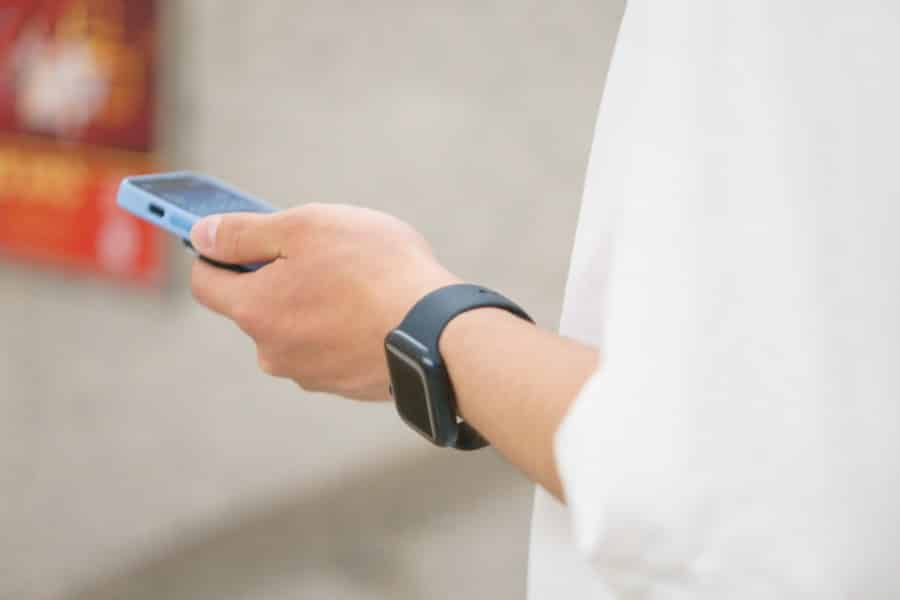In today’s fast-paced world, convenience and efficiency have become paramount in our daily lives. Smartwatches epitomize this trend, offering a compact solution that integrates multiple functionalities into a single device worn on the wrist. With the ability to receive notifications, track fitness metrics, and manage schedules, smartwatches streamline daily tasks, allowing users to stay connected without the need to constantly check their smartphones.
For instance, a busy professional can glance at their wrist to see incoming emails or messages during a meeting, minimizing disruptions while maintaining productivity. Moreover, the efficiency of smartwatches extends beyond mere notifications. Many models come equipped with voice assistants, enabling users to perform tasks hands-free.
This feature is particularly beneficial for individuals who are multitasking or on the go. For example, a person cooking in the kitchen can set timers, check recipes, or even make calls without touching their phone. The integration of various applications into a single device not only saves time but also reduces the clutter of carrying multiple gadgets.
As technology continues to evolve, the convenience offered by smartwatches is likely to expand further, making them an indispensable tool for modern living.
Key Takeaways
- Contactless payment options offer convenience and efficiency for quick and easy transactions.
- Security and safety features ensure that personal and financial information is protected during transactions.
- Fashion and style are integrated into wearable technology, allowing for both functionality and aesthetic appeal.
- Integration with other devices enhances the overall user experience and streamlines daily activities.
- Health and wellness features promote a balanced lifestyle and encourage physical activity and mindfulness.
- Accessibility for all is a key consideration, ensuring that wearable technology is user-friendly for people of all abilities.
- Environmental impact is minimized through sustainable design and energy-efficient technology, aligning with eco-friendly values.
Security and Safety
As technology advances, so do concerns regarding security and safety. Smartwatches have made significant strides in addressing these issues, incorporating features that enhance user protection. One of the most notable advancements is the inclusion of biometric security measures such as fingerprint sensors and heart rate monitors.
These features ensure that only authorized users can access sensitive information stored on the device. For instance, a smartwatch equipped with a heart rate monitor can lock itself if it detects an unusual heartbeat pattern, alerting the user to potential health issues while safeguarding personal data. In addition to biometric security, many smartwatches now offer emergency features that can be life-saving in critical situations.
For example, some models include fall detection technology that automatically alerts emergency contacts if the wearer experiences a fall and remains immobile. This feature is particularly beneficial for elderly users or those with health conditions that may increase their risk of falls. Furthermore, GPS tracking capabilities allow users to share their location with trusted contacts, providing an added layer of safety during outdoor activities or when traveling alone.
The combination of these security features not only enhances user confidence but also promotes a sense of safety in an increasingly unpredictable world.
Contactless Payment Options

The rise of contactless payment options has revolutionized the way consumers conduct transactions, and smartwatches are at the forefront of this trend. With built-in NFC (Near Field Communication) technology, many smartwatches allow users to make payments simply by tapping their wrist against a compatible payment terminal.
For instance, during a busy morning commute, a user can effortlessly pay for their coffee without fumbling through their bag or wallet. Moreover, contactless payments via smartwatches enhance security during transactions. Unlike traditional credit cards that can be easily lost or stolen, smartwatches often require biometric authentication or a PIN before processing payments.
This added layer of security minimizes the risk of unauthorized transactions and provides peace of mind for users. Additionally, many financial institutions and payment platforms are increasingly supporting smartwatch payments, expanding the ecosystem of merchants where these transactions can occur. As consumer preferences shift towards digital wallets and contactless solutions, smartwatches are poised to play a pivotal role in shaping the future of commerce.
Fashion and Style
Smartwatches have transcended their functional origins to become significant fashion accessories that reflect personal style and taste. With a wide array of designs, materials, and customizable watch faces available, users can select a smartwatch that complements their wardrobe and lifestyle. High-end brands have entered the smartwatch market, offering luxury options that combine cutting-edge technology with exquisite craftsmanship.
For example, brands like TAG Heuer and Fossil have created smartwatches that feature premium materials such as stainless steel and leather, appealing to consumers who prioritize aesthetics alongside functionality. Customization options further enhance the fashion aspect of smartwatches. Users can change watch bands to match different outfits or occasions, allowing for versatility that traditional watches may lack.
Many smartwatches also offer customizable watch faces that can display various themes, colors, and complications tailored to individual preferences. This level of personalization not only allows users to express their unique style but also makes smartwatches suitable for various settings—from casual outings to formal events. As fashion continues to evolve in tandem with technology, smartwatches are increasingly recognized as essential accessories that blend practicality with style.
Integration with Other Devices
The seamless integration of smartwatches with other devices is one of their most compelling features, creating an interconnected ecosystem that enhances user experience. Smartwatches can sync effortlessly with smartphones, tablets, and even home automation systems, allowing users to control various aspects of their digital lives from their wrist. For instance, a user can receive notifications from their smartphone on their smartwatch while simultaneously controlling smart home devices like lights or thermostats through voice commands or touch interactions.
This integration extends beyond mere notifications; it also encompasses health and fitness tracking capabilities that sync with other health-related devices. Many smartwatches can connect with fitness trackers or smart scales to provide a comprehensive overview of an individual’s health metrics. This interconnectedness allows users to monitor their progress over time and make informed decisions about their wellness routines.
Additionally, integration with music streaming services enables users to control playback directly from their wrist while exercising or commuting, further enhancing the convenience factor. As technology continues to advance, the potential for even deeper integration between smartwatches and other devices will likely expand, creating a more cohesive digital experience.
Health and Wellness Features

The health and wellness features embedded in modern smartwatches have transformed them into essential tools for individuals seeking to improve their overall well-being. Many models come equipped with advanced sensors that monitor vital signs such as heart rate, blood oxygen levels, and even electrocardiograms (ECGs). These capabilities empower users to take charge of their health by providing real-time data that can inform lifestyle choices and alert them to potential health issues.
For example, a smartwatch that detects irregular heart rhythms can prompt users to seek medical advice before a more serious condition develops. In addition to monitoring vital signs, smartwatches often include fitness tracking features that encourage physical activity and promote healthier habits. Users can set fitness goals, track steps taken throughout the day, and monitor calories burned during workouts.
Some models even offer guided workouts or coaching features that adapt to individual fitness levels and preferences. This gamification of fitness not only motivates users to stay active but also fosters a sense of community through challenges and social sharing options. As awareness of health and wellness continues to grow, smartwatches are becoming indispensable companions for those committed to leading healthier lives.
Accessibility for All
Accessibility is a crucial consideration in the design and functionality of smartwatches, ensuring that these devices cater to a diverse range of users with varying needs. Many manufacturers are prioritizing inclusive design principles by incorporating features that assist individuals with disabilities or impairments. For instance, voice control capabilities enable users with limited mobility to navigate their devices hands-free, while haptic feedback provides tactile notifications for those who may have hearing impairments.
Furthermore, customizable settings allow users to adjust font sizes, color contrasts, and notification preferences according to their specific requirements. This level of personalization ensures that individuals with visual impairments can still engage with their devices effectively. Additionally, some smartwatches offer specialized apps designed for specific disabilities—such as fall detection for seniors or health monitoring for individuals with chronic conditions—further enhancing accessibility.
By prioritizing inclusivity in design and functionality, smartwatches are becoming valuable tools for all users, regardless of their physical abilities.
Environmental Impact
As awareness of environmental issues grows, consumers are increasingly considering the ecological footprint of their technology choices. Smartwatch manufacturers are responding by adopting sustainable practices in production and materials sourcing. Many brands are exploring eco-friendly materials such as recycled metals and biodegradable plastics in their smartwatch designs.
For example, some companies have introduced models made from recycled ocean plastics or sustainable materials like bamboo, appealing to environmentally conscious consumers. Additionally, the longevity of smartwatches contributes positively to environmental sustainability by reducing electronic waste. With regular software updates and modular designs that allow for easy repairs or upgrades, many smartwatches are built to last longer than traditional electronic devices.
This focus on durability not only benefits consumers but also helps mitigate the environmental impact associated with frequent device replacements. As technology continues to evolve alongside environmental concerns, the smartwatch industry is likely to play a pivotal role in promoting sustainable practices while delivering innovative solutions for consumers seeking both functionality and eco-friendliness in their devices.
This trend is part of a broader movement towards more versatile and multifunctional technology, as seen in other areas of consumer electronics. For instance, the


